Advertisement
The Weekender: Boston's Saturday Morning Newsletter
What it takes to grow the Gardner Museum’s striking nasturtiums, from greenhouse to grand display
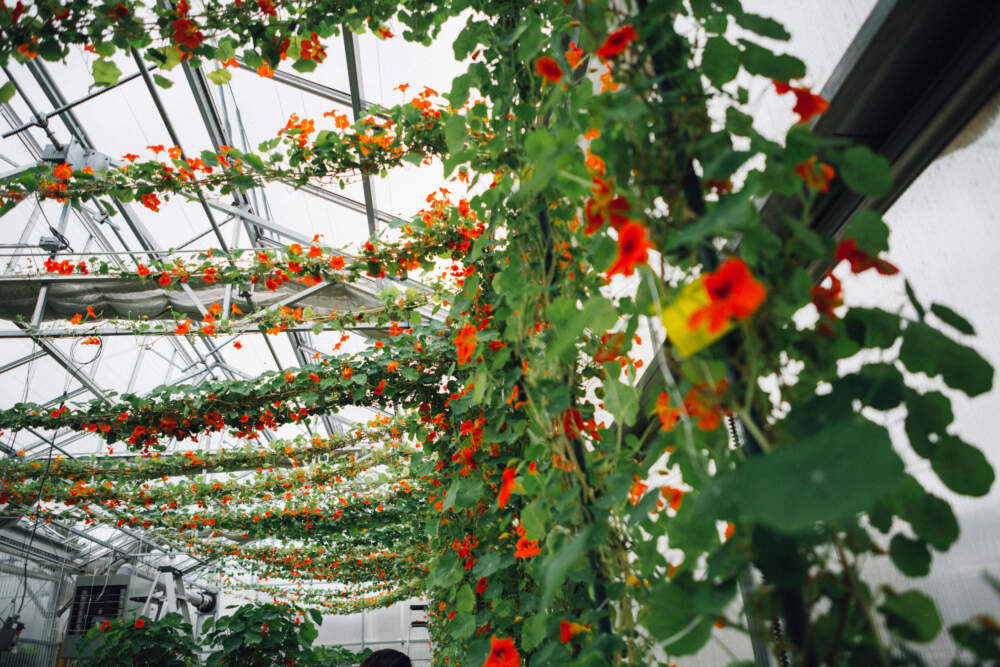
Editor's Note: This is an excerpt from WBUR's Saturday morning newsletter, The Weekender. If you like what you read and want it in your inbox, sign up here.
This past Thursday, horticulturists at the Isabella Stewart Gardner Museum carried out one of Boston’s classic spring processions: The hanging of 18 bright orange, 20-foot-long nasturtium vines from the museum’s courtyard windows.
“Hanging Nasturtiums,” the display’s formal name, has been a tradition at the Gardner for more than 100 years, born from the museum founder’s love for the exotic blossoms.
Like all spectacular works of art, the nasturtiums display requires fine craftsmanship. And working with a living medium — flowers — presents its own complex challenges.
“It’s this really long, caring, labor-intensive process,” says Erika Rumbley, the Gardner’s director of horticulture. “But it’s such a welcome shot of color for those who have just endured the gray winter in Boston.”
I spoke with Rumbley to get some behind-the-scenes intel on what it takes to get the nasturtiums from seed to vine.
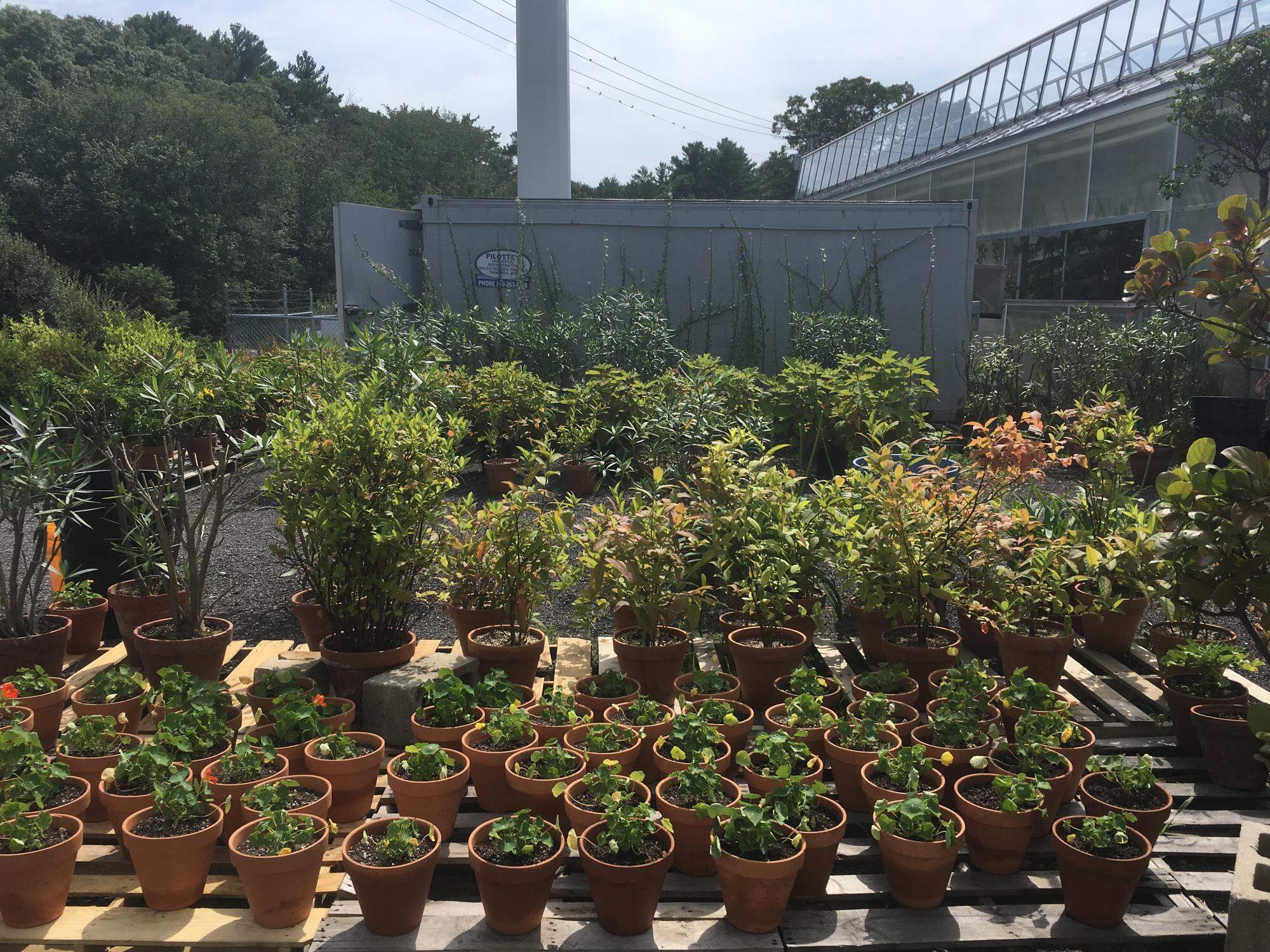
Summer
In June, Rumbley’s team starts planting nasturtium seeds in the Gardner’s off-site greenhouse nursery on the South Shore. Then in July, the plants are usually repotted and moved outdoors.
Because of Massachusetts’ particularly rainy weather last summer, this year’s nasturtiums were kept inside a little longer than usual.
“They stayed in the greenhouses until they were well rooted and didn’t go outdoors until they were ready to receive a lot of rain,” said Rumbley. “If they had been growing outdoors in pots [all summer], they wouldn’t have been happy through such a rainy season.”
In August, the flowering plants are repotted again into larger, terracotta pots, where they’ll be pruned to (near) perfection through the cold months.
Fall and winter
While the team starts with over 100 nasturtium plants (the same South American heirloom variety that Isabella grew), they painstakingly pare down the crop. Plants that appear bicolor, yellow, pale orange or red by September and October get composted.
“We select for that deep, saturated, vibrant orange,” said Rumbley.
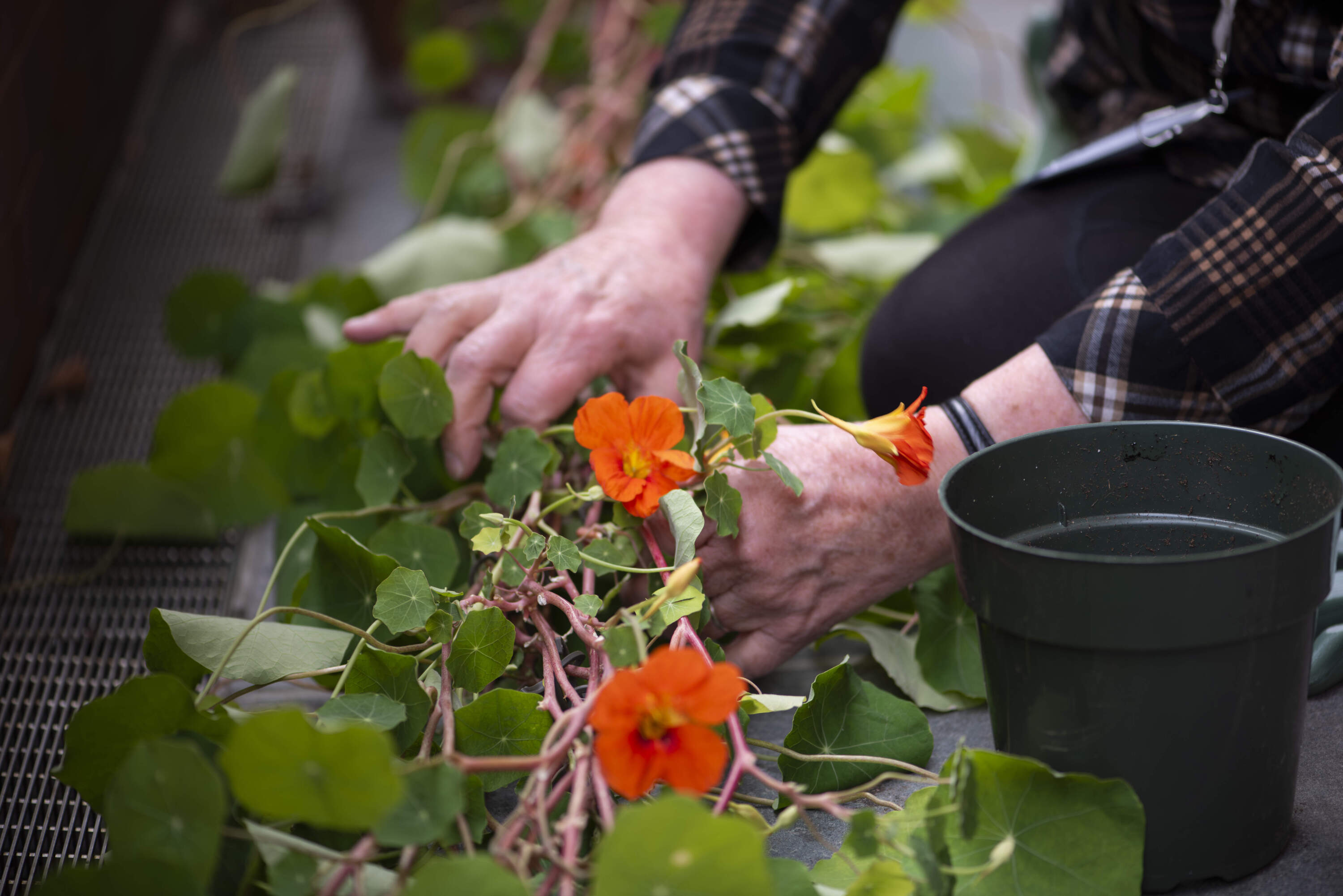
When it comes to cultivating those 20-foot vines, Rumbley added that they’re also looking “form and length.”
“We want a really thick, healthy stem, with not a lot of branching,” she said. “If there’s a plant that shows us it wants to be more like a bush than a cascade, then we’re going to choose [one] that’s a cascade instead.”
By November, the plants that have successfully formed vines are staked up on trellises. The team removes any flowers that have bloomed to encourage the plants to grow longer. “The main thing that’s happening during [that time] is pruning,” said Rumbley. “We prune daily.”
This year, they only stopped pruning the nasturtiums on March 14, just two weeks before the vines were installed. “That’s a little more than seven months of removing flowers,” said Rumbley.
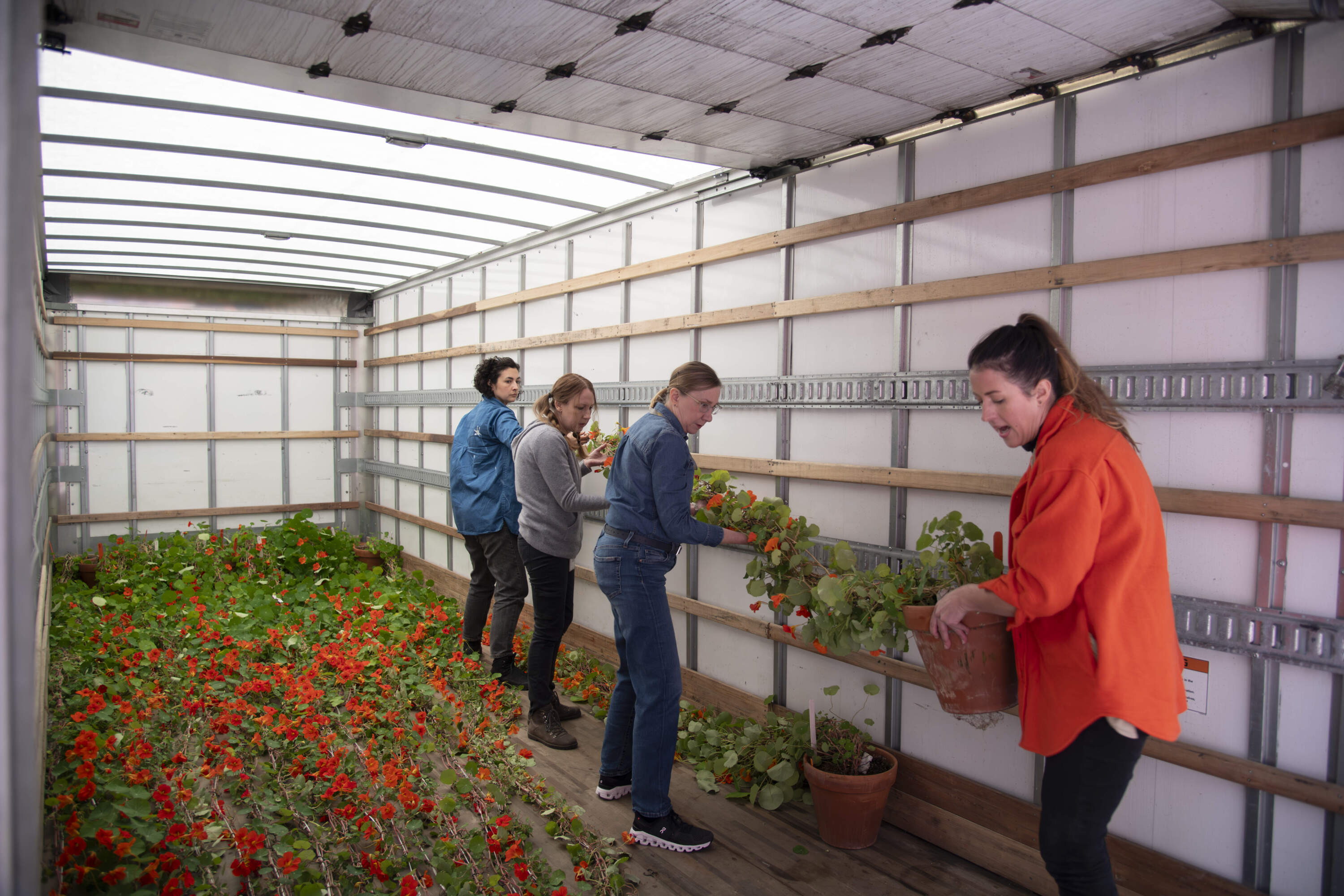
Spring
When it’s finally time for the nasturtiums to make their seasonal debut, Rumbley’s team of staff and volunteers cut down the floral vines from the trellises so they can be transported to the museum. Then, they’re draped out of the courtyard windows to create the stunning display that’s been a symbol of springtime since 1904.
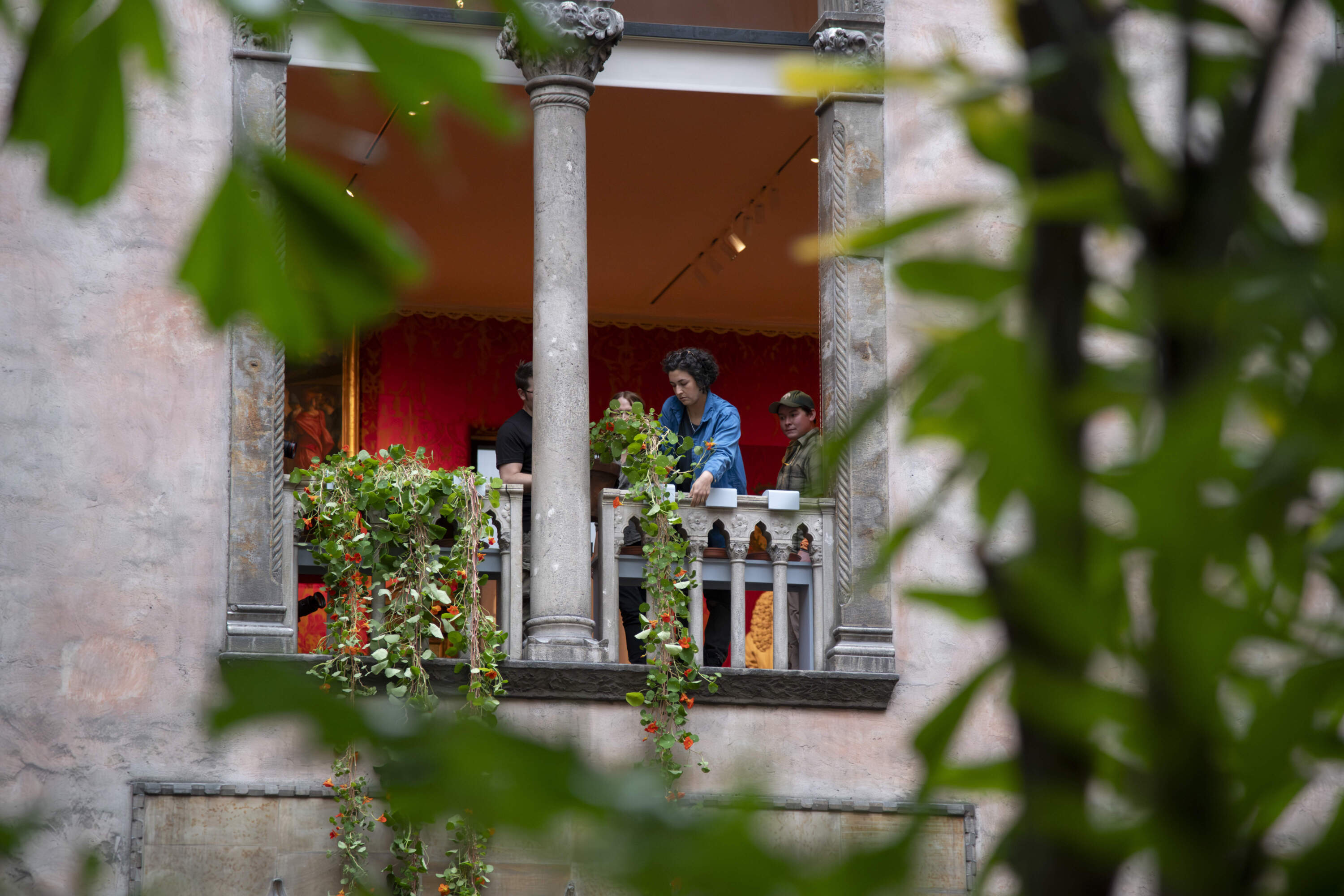
“The kind of wild game of it is that we grow them for most of the year for them to be displayed for three weeks,” said Rumbley. “At the end, how they do in those three weeks is up to the weather during that time. So it’s a challenge, but it’s the luck of the draw when it comes to working with plants as your medium.”
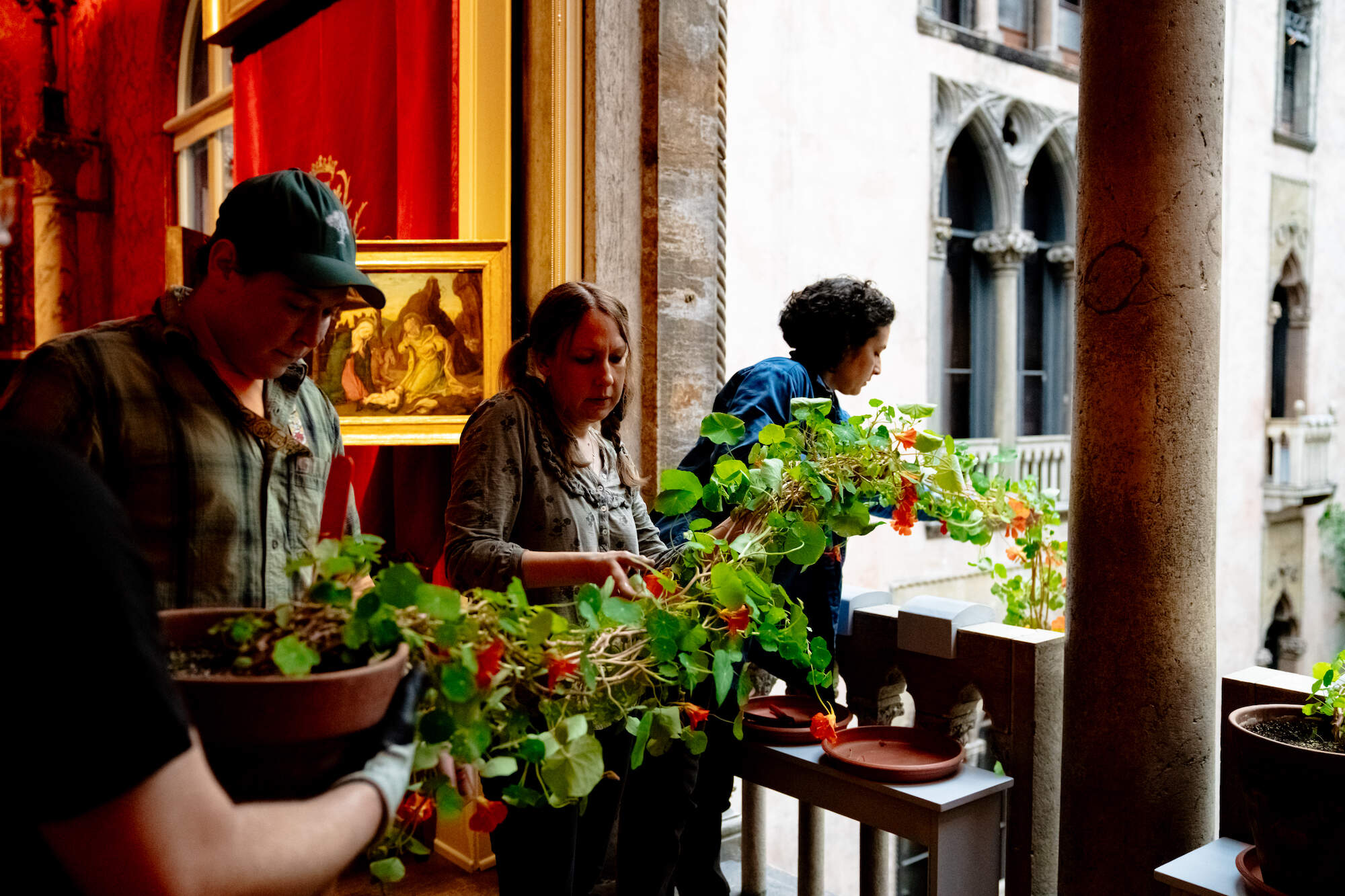
For Rumbley, one of the best parts of the annual display is the look on people’s faces when they see the flowers. “Being able to continue the tradition is a joy and a privilege,” said Rumbley. “Just getting to see people drink in those decadent, saturated flowers … it’s really a treat. That’s why we do it.”
P.S. — You can see the nasturtiums on display through April 14 anytime during the Gardner’s regular hours, but just an FYI: the museum is offering free admission on April 4 from 3 p.m. to 9 p.m. as a part of its “Free First Thursdays.” Check out these photos of last year’s installation to see Rumbley and her team of horticulturists and volunteers in action as they carefully hang each of the lush floral vines.
